
INTRODUCTION
This guide contains updated information about the federal archives in the Russian Federation, located mainly in Moscow and St. Petersburg. Since the outbreak of the Russian-Ukrainian war, access to archives in Russia has been severely limited, forcing researchers outside of the country to seek alternative sources and locations in Eurasia. At this time, we are sharing a selective list of online resources, such as online search tools, digital finding aids, and published guides to federal archives. We will continue monitoring for updates from the archives and share them here.

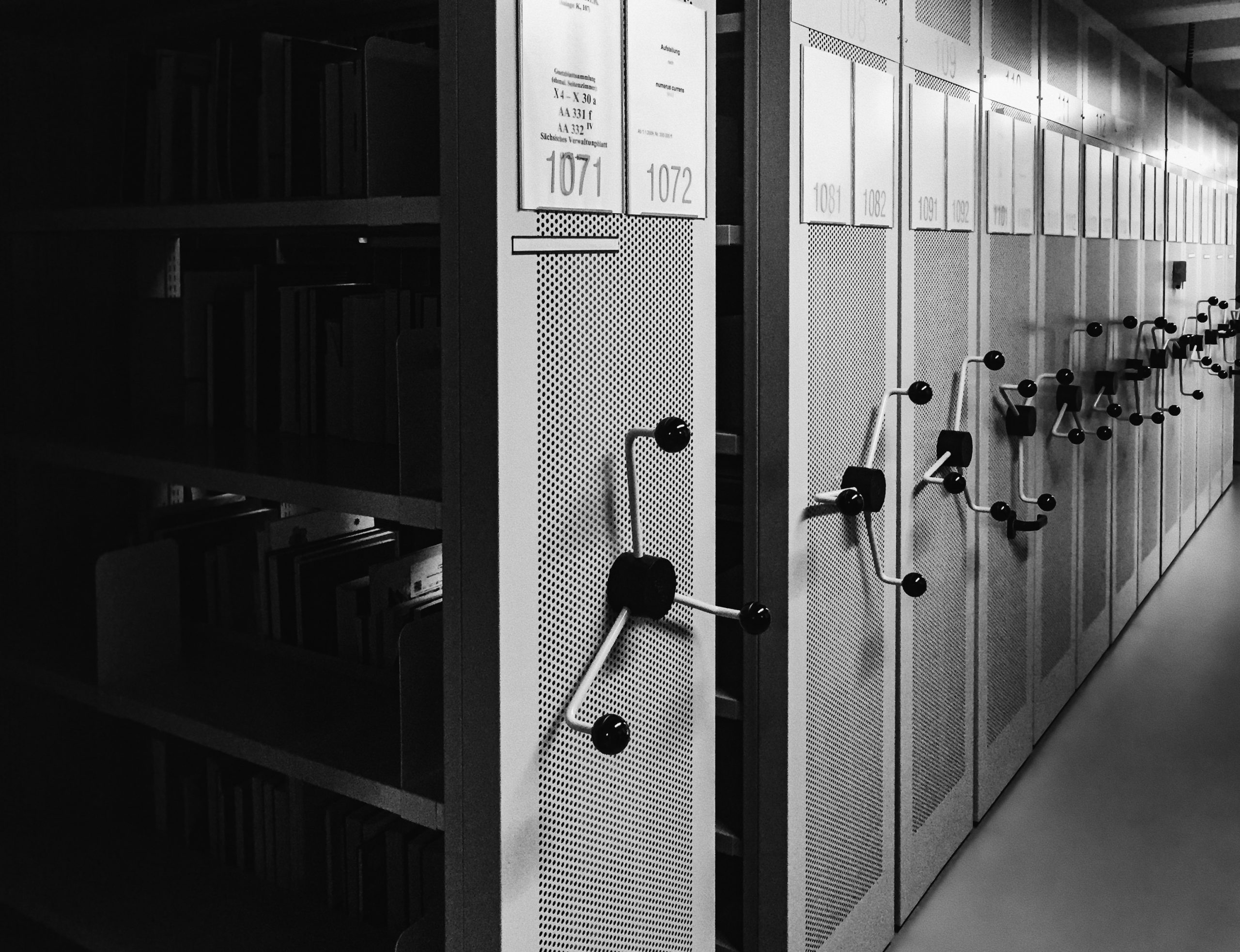
| Russian Original | [Архивный] Фонд | [Архивная] Опись | Дело |
|---|---|---|---|
| English Equivalent | Fond, archive group, collection – an integral group of records from one source | Opis’, series | Delo, file designation – the actual files (folders or boxes) that contain the listy (sheets) |
| Abbreviation | “f.” / «ф.» | “op.” / «оп.» | “d.” / «д.» [or “ed. khr.” / «ед. хр.»] |
| Examples | GARF f. 1235. All-Russian Central Executive Committee of Soviets (VTsIK) | GARF f.1235, op.1, II sozyv–October 1917 | GARF, f. 1235, op.1, d. [or ed. khr.] 16, ll. 5-7ob |
An example of Archival Organization:

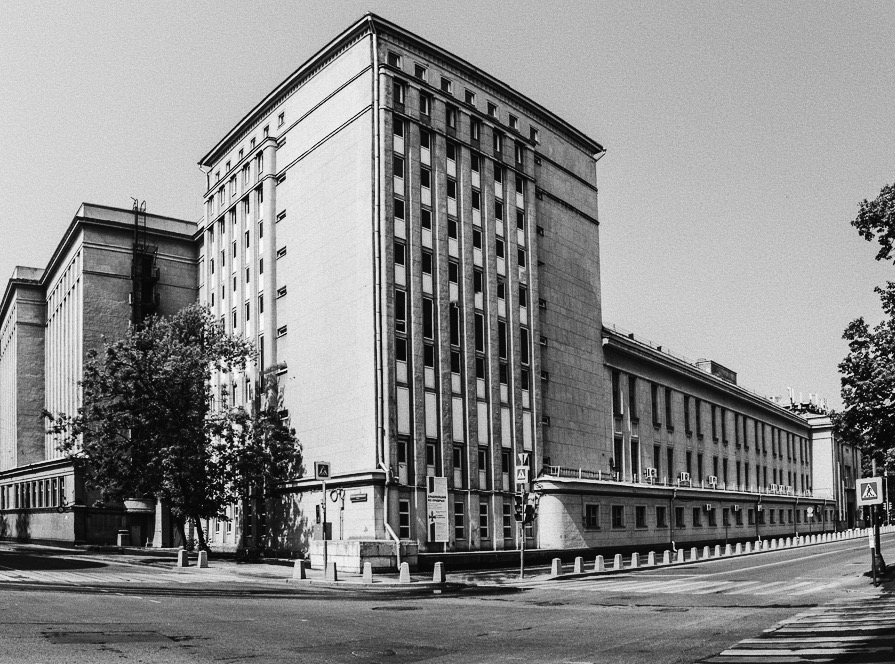
URL: http://www.statearchive.ru
Е-mail: sic_faa@mail.rgantd.ru
The largest federal archive in the country, which holds about 7 million files on the history of Russia in the 19th – 21st centuries. It contains documents of the highest bodies of state power and administration of the Russian Federation. It was the primary state archive for pre-Revolutionary society and the Soviet state.
Online Access to GARF Research Guides:
1. Electronic Guides and Inventories (in Russian)
2. Research Guides available as PDF files (Volumes 1 and 2 have English introductions and surveys of holdings):
a) Collections of the State Archive of the Russian Federation on the History of Russia in the 19th and Early 20th Centuries (Volume 1). A comprehensive guide to the pre-revolutionary holdings of the GA RF. These pre-revolutionary holdings consist of collections assembled for a study of the revolutionary movement that preceded the Bolshevik seizure of power in October 1917. The archive also includes the files of those who opposed the revolutionary movement.
b) Collections of the State Archive of the Russian Federation on the History of RSFSR (Volume 2). This guide represents the first comprehensive survey of holdings on the history of the Russian Soviet Federal Socialist Republic in the collections of the GARF. The guide provides information on the composition and content of the documents of the supreme state authorities, central government bodies of the RSFSR and their subordinate institutions, and records of public organizations of the RSFSR, which reflect economic, socio-political, social, and national problems of the history of the RSFSR from 1917 to 1991.
c) Collections of the State Archive of the Russian Federation on the History of the USSR (Volume 3). The guide contains information about the documents of the highest bodies of state power and administration stored in the GARF, represented by the archives of the Central Executive Committee of the USSR, the Supreme Soviet of the USSR, and the Council of Ministers of the USSR. It also contains information on the central bodies of the USSR state administration in the fields of internal affairs, justice, state control of labor, health care, physical culture and sports, tourism, public education, press, information, as well as the highest bodies of courts, prosecution, arbitration, special judicial and investigative institutions, central bodies of public organizations of the USSR: trade union, socio-political, defense and sports, mutual aid and social protection and several others. These archives reflect the history of the Union of Soviet Socialist Republics from 1923 to 1991.
d) Collections of the State Archive of the Russian Federation on the History of the White Movement and Emigration (Volume 4). This guide contains information about the documents of the White Guard government institutions that operated in the territory of the former Russian Empire in 1919-1922 and records of emigrant organizations for 1918-1946 stored in the GARF. The archives of the White Guard governments included in the guide are represented by their central and local institutions, while the emigrant archives are comprised of institutions and organizations that operated in the Russian Federation and consist of institutions and organizations that operated in different countries.
e) Personal Collections of the State Archive of the Russian Federation (1917-2000) (Volume 5). The guide contains information about documents in the personal archives of state and public figures of the USSR and RSFSR (1917-1991) and state figures of the Russian Federation (1991-2000). The guide also includes descriptions of the personal archives of Russian emigration figures and archival collections kept in the GARF. Private collections contain various types of documents: diaries, memoirs, letters, manuscripts of articles, books, photographs, drawings, and other visual materials.
f) New Additions (1994-2019) (Volume 7) This guide contains information about the documents of the supreme bodies of state power and administration of the Russian Federation, represented by the fonds of the Congress of People’s Deputies of the Russian Federation, the Supreme Soviet of the Russian Federation, the Federal Assembly of the Russian Federation, the Government of the Russian Federation, and the executive authorities of the Russian Federation. In addition, the guide includes descriptions of collections of microphotocopies of documents on the history of Russia received by the GARF from foreign archives, as well as new additions for 1994-2019 (including descriptions of the fonds of the Council of Ministers of the USSR for 1950-1991, personal archives and collections, emigrant archives, and declassified archives).
3. Electronic Archive of the Collections of the Soviet Military Administration in Germany
The materials of the Soviet occupation regime on the territory of Germany were opened for use only after the collapse of the USSR. Currently, the Electronic Archive of the SMAG holdings contains 266,487 descriptions with electronic images of documents.
4. Database of printed publications of the Russian Abroad 1918-1991: Bibliographic index
5. Posters in the collections of the Scientific Library of the GARF
The Scientific Library poster collection has 12,220 items. The collection includes works by Soviet artists, diverse in subject matter and style, mainly from 1918 to the early 1960s, published in Moscow and Petrograd-Leningrad and various local publishing houses.
URL: http://www.rusarchives.ru/federal/rgada, http://rgada.info/index.php
Email: rgada@mail.ru
RGADA contains documents from the 11th to the early 20th centuries. The Archive’s collections include materials from the institutions of higher, central, and local administration of the early Russian state and the Russian Empire before the administrative reforms of the late 18th to early 19th centuries. It also contains archives of the central surveying institutions of Russia of the 18th – early 20th centuries, documents of state and public figures, figures of science and culture, patrimonial and monastic archives, collections of written stories, culture and everyday life of Russian and other peoples of the Russian Empire, collections of domestic and foreign manuscript books, old printed and rare editions of the 15-19th centuries.
Online Access to RGADA Research Guides and Indexes:
1. Series and indexes (5,318 records) – in Russian
2. Embassy books of the late 15th – early 18th centuries (index)
From the end of the 15th to the beginning of the 18th century, there are 766 ambassadorial books: 178 of them are on Russia’s relations with the countries and peoples of the East, while the remaining 588 reflect the ties between Russia and the West. These sources relate to Russia’s permanent diplomatic relations with 17 foreign countries (610 books) and various national territories that later became part of the Russian state (156 books).
3. Fond 281 “Diplomas of the Collegium of Economy” (11,082 records)
4. Fond 248 “The Senate and its institutions (consolidation of fonds), St. Petersburg, Moscow” (50,650 records)
5. Collection of unique items (334 items)
URL: http://www.rusarchives.ru/federal/rgia, https://fgurgia.ru/
Email: fgurgia@mail.ru
RGIA holds documents of the supreme and central bodies of state power and administration of the Russian Empire, mainly from the end of the 18th to the early 19th century to 1917, as well as public organizations, institutions, and individuals of pre-revolutionary Russia. The Archive contains the collections of practically all the highest state institutions of Russia of the pre-revolutionary period, as well as documents on religious and cultural history: materials of the Holy Governing Synod, archives of the Alexander Nevsky Lavra, Smolensk Orthodox Cemetery, educational records of the School Board, Educational Committee, etc.
Online Access to RGIA Resources:
1. Electronic Catalogue
2. Research guides
3. Inventory register
4. Online exhibitions
Provided Services:
Copying of documents and other services:
Most of the requests should be submitted through the Personal Account on the website. Inquiries can also be sent by e-mail with the following information:
1. Last Name, First Name (if applicable, patronymic) of the applicant
2. Contact information: phone numbers, e-mail, postal address
3. In the request, it is necessary to specify the information with possible completeness.
4. When ordering copies, specify the number of the fond, opis’ and delo, the document’s name or the subject, if necessary – the province, year, or structural part, etc.
5. Information services are provided on a contractual basis. To conclude contracts with individuals, passport information will be required.
The results of requests are provided in the form of archival certificates, extracts, and archival copies. The archive does not copy archival files in their entirety but provides copies of individual documents from files.
See the Price List for details. Payment can be processed through Sberbank.
URL: http://www.rusarchives.ru/federal/rgae, http://rgae.ru/arkhiv-rgae.shtml
Email: rgae@rgae.ru
RGAE keeps economic documentation for the years 1898-2018, totaling more than 5 million storage items, organized into 2320 archival collections.
Online Access to RGAE Resources:
1. Electronic Catalog and Inventory
2. List of RGAE collections stored in the archival repositories
3. Thematic lists of archival documents
URL: http://rgantd.ru/
Email: kanc@mail.rgand.ru
This Federal Archive keeps scientific and technical documentation of the Soviet and post-Soviet times. In addition, the archive holds research, design, and project documentation of the pre-revolutionary period deposited in the organizations of the RGANTD. It contains scientific and technical documentation about industrial development, patents, and personal papers of scientists, scholars, inventors, and engineers.
Online Access to RGANTD Resources:
1. Electronic catalog
2. List of archive groups with descriptions
3. Photo catalog
4. Online exhibitions and publications
URL: http://rgakfd.ru/
Email: filmarchives@aha.ru
Email for international scholars: rgakfd@aha.ru
The RGAKFD contains one of the world’s largest public collections of audiovisual documents. The archive’s records reflect the socio-political, economic, and cultural life events of Russia, the Soviet Union, and foreign countries from the second half of the 19th century to the present. They are represented by chronicle-documentary and popular science films, newsreels for 1910-2005, special editions for 1939-1945, the film archive of the royal family from 1896-1916, and several foreign countries’ silent and sound film documents. Photographic documents are on various media (film, glass, digital format; daguerreotypes) reflecting the history of the Russian Empire, the USSR, and the Russian Federation, including the armed forces, economy and politics, science and culture, public life and education, health care, and sports.
Online Access to RGAKFD Resources:
1. English language film catalog
2. Archival films available online
3. Electronic film catalog
4. Electronic photo catalog (with rubrics, themes, persons, etc.)
URL: http://www.rusarchives.ru/federal/rgafd, http://xn--80afe9bwa.xn--p1ai/
Email: rgafd@mail.ru
The Russian State Archive of Phonodocuments (Sound Recordings), established in 1932, is Russia’s most extensive collection of sound documents. More than 300,000 storage units contain events in Russian and world history, works of literature, and art of all genres and trends – everything that could and can exist in sound from the invention of sound recording in the late 19th century to the present day. Also represented in the Archive’s holdings are unique types of sound carriers – from phonovaliks and “talking paper” to gramophone records, magnetic tape, and the most modern laser disks.
Online Access to RGAFD Resources:
1. Archive groups overviews
These overviews contain information about the phonodocuments of the Russian State Archive Collection stored in the Russian State Archive of Phonodocuments and represent brief characteristics of the sound document collections. The content of archival phonodocuments covers various aspects of social life. Still, it is dominated by two historically established directions – the history of culture and the chronicle of social and political life.
2. Database search
3. Thematic catalogs
4. Lists of archive groups and series (some with descriptions)
URL: http://www.rusarchives.ru/federal/rgali, https://www.rgali.ru/
Email: chital_zal@rgali.ru, rgali@rgali.ru
This is Russia’s most extensive repository, which contains materials on the history of Russian literature, music, theater, cinema, fine arts, architecture, etc. The RGALI documents provide information about the cultural life of the country, different stages of literature development, art and public thought, and artistic collaborations between representatives of local and foreign cultures. The archive contains collections of central cultural authorities, theaters, film studios, specialized educational institutions, publishing houses, public organizations, and personal libraries of literary critics, artists, composers, and theater and cinema workers.
Online Access to RGALI Resources:
1. Electronic catalog
2. List of archive groups
3. Research Guides:
a) Personal archive groups
b) Archive groups of state institutions and creative organizations
c) Collections
URL: http://www.rusarchives.ru/federal/rgva, https://rgvarchive.ru/
Email: rgva_rf@mail.ru
This federal archive is the largest repository of military and historical documents of the Soviet period: the Red Army (1918-1940) and the NKVD-MVD of the USSR (1917-2001), as well as documentation on the history of the White Movement (1917-1922) and foreign trophy documents taken to the USSR at the end of World War II. It contains archives on the history of the armed forces and the USSR Ministry of Internal Affairs, documents on military operations in the USSR before World War II, political labor in the Red Army, biographical materials, and service lists of military figures. There are also documents on foreign prisoners of war and prisoners of camps from World War II and the subsequent period.
Documents and foreign archives exported to the USSR during World War II (from the 15th century to 1945) contain:
• Official documents of the Third Reich;
• Documents of the authorities and administrations of European states (Poland, Belgium, Austria, France, etc.), which were seized by the Nazi authorities on the territory of these states;
• Archival groups of various European non-governmental institutions, organizations, and individuals,
• Materials of foreign origin from personal and family archives.
RGVA research guides available online:
1. Jewish Documentary Sources among the Trophy Collections of the Russian State Military Archive (PDF) is the first official publication presenting the collections of foreign origin of the Russian State Military Archive, which contain documents of Jewish origin, documents of state institutions, and public organizations of Europe on Jewish history and culture.
2. Microfilm documents of Belgium, Netherlands, and Luxembourg in the Russian State Military Archive (online catalog) is a list of archival groups’ descriptions stored in the Russian State Military Archive that contains microfilms of documentary collections from Belgium, the Netherlands, and Luxembourg.
3. Index of archival groups of foreign origin and the Main Directorate for Prisoners of War and Internees of the NKVD-MVA of the USSR of the Russian State Military Archive (online catalog) contains a list of archival groups of the former Center for the Preservation of Historical and Documentary Collections (Special Archive). The archival groups of foreign origin are subdivided into archival groups, personal collections, and archival groups transferred to their countries of origin.
4. Guide to the White Army archival groups. Russian State Military Archive (online catalog) includes information about all the materials of central and district administration, headquarters, institutions, and units (more than 800 archival groups) stored in the archive and until recently closed for wide use. Among the documents of the White Army are materials captured during the Civil War and the fonds of the former Russian Foreign Historical Archive in Prague, which were transferred to the USSR after the end of the Great Patriotic War.
5. Archival groups of Belgian origin. Annotated index (PDF) contains the archival groups of documents of the Kingdom of Belgium taken by the Soviet Army as part of the German trophy documentary and printed materials from Welfelsdorf near Habelschwerdt (Silesia) in the fall of 1945.
URL: http://www.rusarchives.ru/federal/rgvia, http://xn--80adcv1b.xn--p1ai/
Email: info@rgvia.com
The RGVIA documents contain information on all armed conflicts in which Imperial Russia participated during more than two hundred years of its existence. They give a complete picture of the development of military art and military-technical thought in Russia and the state of its armed forces. The archival groups also contain detailed information about the administrative-territorial structure and the state of the Russian economy. The collections of the Military Scientific Archive include military-statistical, geographical, topographical, and economic descriptions of regions, provinces, uyezds, and cities of the empire. RGVIA also has unique architecture and town planning history sources, such as drawings of various military and civil constructions, temples, and monasteries.
Online Access to RGVIA Resources:
1. Database of RGVAI electronic inventories
2. Virtual Exhibitions
3. Online Publications
URL: http://www.rusarchives.ru/federal/rgavmf, https://rgavmf.ru/
Email: mail@rgavmf.ru, mails@rgavmf.ru
The RGAVMF preserves documents of the Russian Navy (late 17th century – 1940). These documents are deposited in the archival groups of the central naval administration, fleet and flotilla administrations, naval educational and research institutions, military ports, shipbuilding, and other enterprises, hydrographic and scientific expeditions, as well as in the personal collections of prominent navigators and naval figures. There is also an extensive collection of construction drawings and plans of cities, mainly port cities, of the 18th – early 20th centuries, as well as a collection of maps from the Archive of the Central Cartographic Production of the Navy, containing atlases and navigational charts, including sea portolan charts of 1550, “Atlas of the Whole World” by Battista Agnese (1554) and others. The archive preserves extensive hydrographic materials, including nautical charts from the collections of the Hydrographic Department, the Main Hydrographic Department, and the Hydrographic Archive of the Fleet.
Online Access to RGAVMF Resources:
1. Online Library
2. Archival Collections
3. Virtual Exhibitions
• Former Rossiiskii tsentr khraneniia i izucheniia dokumentov noveishei istorii (RTsKhIDNI) [Russian Center for Preservation and Study of Records of Modern History].
• Former Tsentr khraneniia dokumentov molodezhnykh organizatsii (TsKhDMO) [Center for Preservation of Records of Youth Organizations] now part of RGASPI.
URL: http://www.rusarchives.ru/federal/rgaspi, http://rgaspi.org/
Email: rgaspi@inbox.ru
The documents of RGASPI constitute three main thematic groups: documents on the social and political history of Western Europe (17th – early 20th centuries); documents on the political and social history of Russia and the USSR of the New and Modern Times (late 19th – early 21st centuries); documents on the history of the international workers’ socialist and communist movement (1860s – late 1980s). Each group includes collections of archives of political parties, social movements, organizations, and institutions. RGASPI also has museum collections and individual original documents bought in foreign antique stores, at auctions, or received as gifts.
Unique documents accessible online.
• Former Tsentr khraneniia sovremennoi dokumentatsii (TsKhSD) | Center for Preservation of Contemporary Documentation, Central Committee archive, 1952-99.
URL: http://www.rusarchives.ru/federal/rgani, http://xn--80afqtm.xn--p1ai/
Email: rgani@gov.ru
The archive holds documents of departments of the Central Committee of the CPSU, its divisions, CPSU congresses, and first secretaries of the party. The archive mainly specializes in keeping files from 1952 to August 1991, but there are files for earlier and later periods. It also has several collections of personal origin, namely, of the CPSU Central Committee General Secretaries: N. S. Khrushchev, L. I. Brezhnev, Y. V. Andropov, M. S. Gorbachev, and K. U. Chernenko.
URL: http://www.rusarchives.ru/federal/rgiadv, https://rgiadv.ru/
Email: rgiadv@rgiadv.ru
The archive holds documents on the history of Khabarovsk and Primorsky Krai, Amur, Kamchatka, Sakhalin, and Chita regions of the Far East, mainly from the mid-19th century to 1940. It contains office records of various levels of government, private companies, public organizations, and individuals. The most informative on the history of the region within the Russian Empire are the archival collections of the Eastern Siberia Main Directorate, the offices of the Priamur Governor-General and military governors of the areas, the Primorsky Regional Board, city councils and boards, administrative, police, customs, medical, postal, telegraphic and other institutions. Many collections of the archive contain documents on the history of the indigenous population of the Far East.
Online Access to RGIA DV Resources:
1. List of archive groups
2. List of digitized inventories of holdings
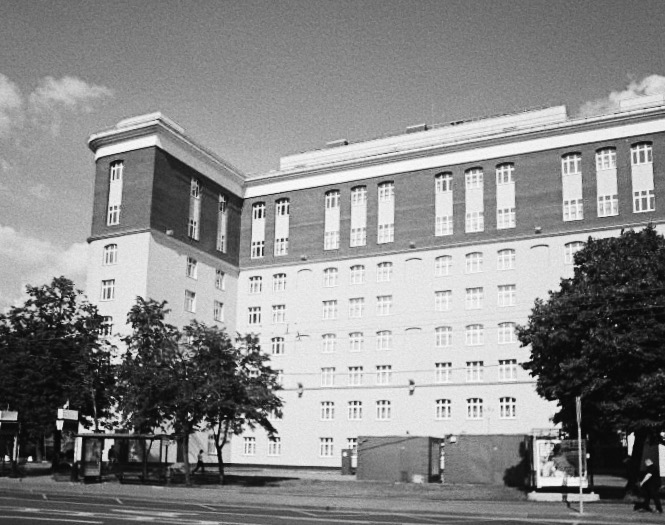
- Arkhiv Prezidenta Rossiiskoi Federatsii (APRF) – Presidential
- Arkhiv vneshnei politiki Rossiiskoi Imperii (AVPRI) – Foreign Policy
- Arkhiv vneshnei politiki Rossiiskoi Federatsii (AVPRF) – Foreign Policy
- Tsentral’nyi arkhiv Ministerstva oborony RF (TsAMO RF) – Post-1941 Military
- Tsentral’nyi arkhiv Federal’noi sluzhby bezopasnosti RF (TsA FSB) – Security agency, holds archival records for former Cheka, OGPU, NKVD, and KGB.
- Tsentral’nyi arkhiv Ministerstva vnutrennikh del RF (TsA MVD Rossii) – Security agency, holds archival records for former Cheka, OGPU, NKVD, and KGB.
- Gosudarstvennyi fond kinofil’mov Rossiiskoi Federatsii (Gosfil’mofond; GFF)
- Gosudarstvennyi fond televizionnykh i radiprogramm (Gosteleradiofond)
- Tsentral’nyi voenno-morskoi arkhiv Ministerstva oborony RF (TsVMA)
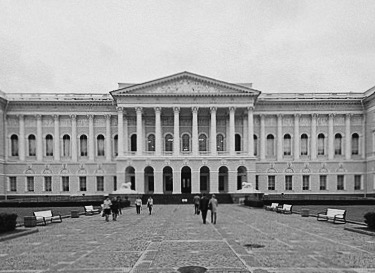
1) The official Russian museums list, daily updated (in English)
2) The biggest portal on Russian museums (in Russian)
3) Museums that often hold manuscripts, rare books, and photo collections:
- City history museums
- Other historical museums
- Museums dedicated to individuals (e.g., Tolstoy or Mayakovsky or Dostoevsky)
- Ethnographic museums
- Art museums
- Theater museums
- Education museum (Makarenko)
- Factory museums
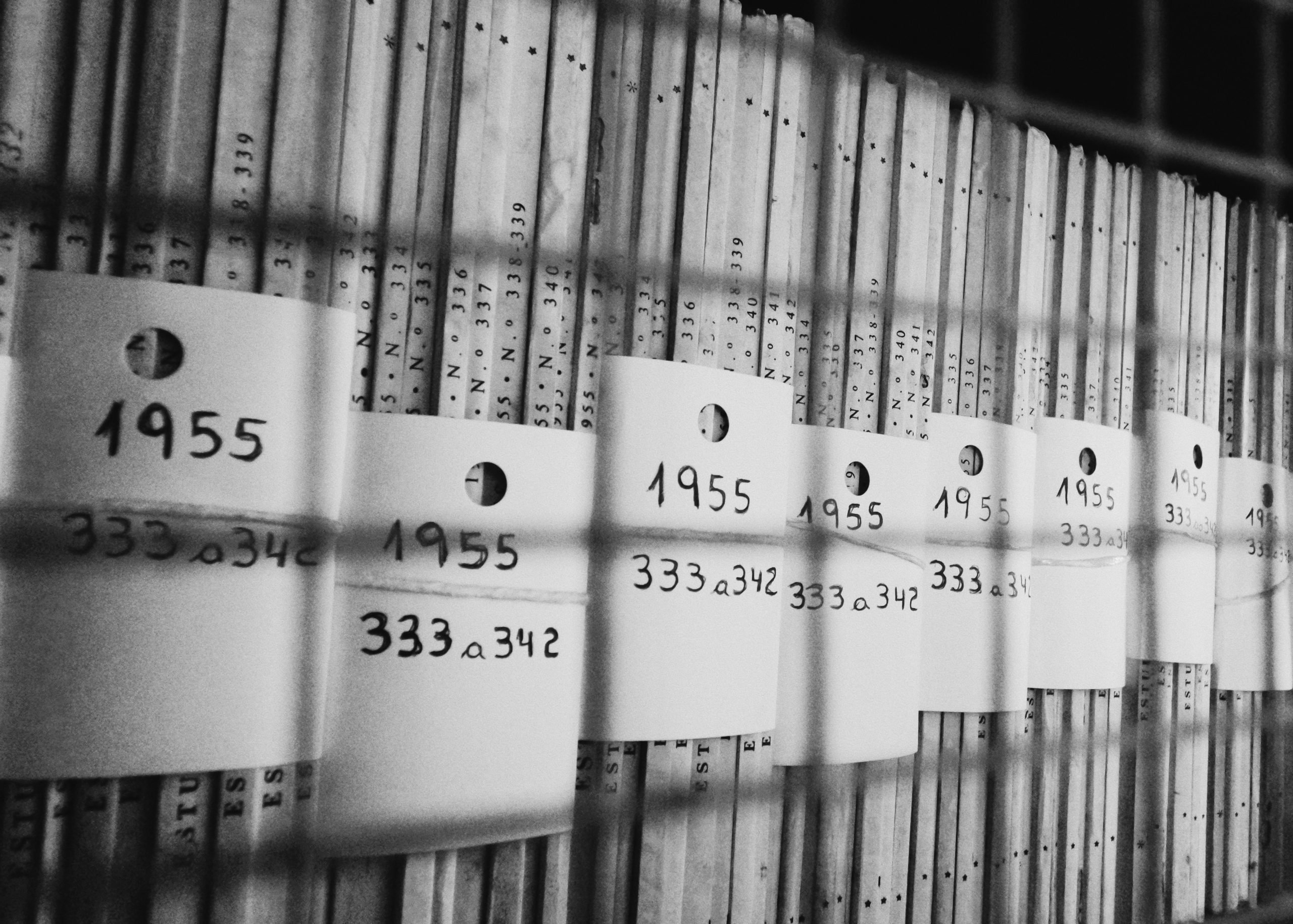

Below, you can find a selection of archive directories that are available in print at the International and Area Studies Library at UIUC (Room 321, 3rd floor of the Main Library).
- Archives of Russia: A Directory and Bibliographic Guide to Holdings in Moscow and St. Petersburg. Grimsted, Patricia Kennedy, English Language Edition (Armonk: Sharpe Publishers, 2000). 2 vols.
U of I Library Call Number: International & Area Studies Russian Reference (Slavic) 027.00254731 Ar481, v. 1-2
This is a comprehensive directory and bibliographic guide to Russian archives and manuscript repositories in Moscow and St. Petersburg compiled by Patricia Grimsted. It is an essential resource for any researcher interested in Russian sources for topics in diplomatic, military, and church history, art, dance, film, literature, science, ethnography, and geography. The first part lists general bibliographies of relevant reference literature, directories, bibliographic works, and specialized subject-related sources. In the following sections of the directory, archival listings are grouped into institutional categories. Coverage includes federal, ministerial, agency, presidential, local, university, Academy of Sciences, organizational, library, and museum holdings. Individual entries include the name of the repository (in Russian and English), basic information on location, staffing, institutional history, holdings, access, and finding aids.
- Tsentralʹnyĭ gosudarstvennyĭ arkhiv Sankt-Peterburga : putevoditelʹ v dvukh tomakh = Центральный государственный архив Санкт-Петербурга : путеводитель : в 2 т. / Арх. упр. С.-Петербурга и Ленингр. обл., Центр. гос. архив С.-Петербурга ; редкол. Н.И. Деринг, Т.С. Конюхова, О.Ю. Нежданова, Н.Ю. Черепенина (отв. ред.) ; сост.: Н.И. Деринг (отв. сост.) [и др.]. – Москва : Звенья, 2002. – (Архивы России : путеводители) = Central state archives in St. Peterburg: Guide-book, two volumes.
U of I Library Call Number: International & Area Studies Library 027.04721 T787 from: v.1 until: v.2
This guidebook provides information about the structure and content of the Central State Archive in St. Petersburg, the former Central State Archive of October Revolution and Socialist Construction of Leningrad – one of the largest archive collections of the Soviet epochs. It provides descriptions of documents on the political, economic, social, and cultural development of Petrograd – Leningrad – St. Petersburg and Petrograd – Leningrad province between 1917-2000. The collection includes documents recently authorized for public viewing.
- Tsentr dokumentatsii “Narodnyĭ arkhiv” : spravochnik po fondam = Центр документации “Народный архив” : справочник по фондам / [avtory, G.S. Akimova, et al. ; pri uchastii L.P. Afanasʹevoĭ, et al. ; pod redaktsieĭ B.S. Ilizarova] = People’s Archive Documentation Center : a guide to the fonds. – 1998.
U of I Library Call Number: International & Area Studies Library 027.047 V871.
This guide contains information on the holdings of the People’s Archive Documentation Center and has the following sections: “Personal Fonds and Collections,” “Collections of the Documents of Organizations, Unions, and Movements,” “Audio and Video Documents,” Periodical Press (Alphabetical Index of Samizdat Collections).” The section “Personal Fonds and Collections” describes the fonds of persons who suffered from repressions in the 1920s-1940s, Gulag workers, and participants of the dissident movement: V. Abramkin, Y.Aikhenwald, A.Bakanichev, M.Gefter, K. Grachev, and others.
- Voice of the people under Soviet rule : from the holdings of the People’s Archive = Golosa iz sovetskoĭ epokhi : iz tsentra dokumentatsii “Narodnyĭ arkhiv” Moskva, Rossiia / Woodbridge, CT : Primary Source Microfilm. – 2003.
U of I Library Call Number: International & Area Studies Library 027.047 V87
The microfilm collection available to researchers represents a small but very valuable part of the materials in the People’s Archive. Documents included in this microfilm collection reflect various aspects of the lives of families and individuals from different historical epochs, such as the families of Afanasiev, Balmasov, Abramkin, Bek, Yedovin, and others. The unique documents relating to the group of Russian human rights defenders who worked in the period from the 1950s through the 1990s are of significant interest.
- Putevoditelʹ po kinofotodokumentam Rossiĭskogo gosudarstvennogo arkhiva kinofotodokumentov (RGAKFD) = Путеводитель по кинофотодокументам Российского государственного архива кинофотодокументов (РГАКФД) / [ответственные составители, Л.Ф. Макарова, Н.П. Смирнова]. – 2010.
U of I Library Call Number: International & Area Studies Library 025.177 P982
This guide is intended for a general acquaintance with the documentary information of the Russian State Archive of Documentary Films and Photographs (RGAKFD). It contains information about film and photo documents from the periods of pre-Soviet, Soviet, and post-Soviet (civil and military) history of Russia. It also features materials from the former republics of the USSR (from the second half of the 19th century to the first half of the 1990s of the 20th century), as well as the history of other countries (from the beginning of the 20th century to the 1990s). The guide is for a wide range of users of audiovisual information.
- Rossiiskii gosudarstvennyĭ arkhiv literatury i iskusstva : putevoditelʹ : iskusstvo [Vyp. 10] = Российский государственный архив литературы и искусства : путеводитель : искусство [Вып. 10] / сост.: Е.В. Бронникова [и др.] / [ответственный редактор Ю.А. Дмитриев]. – 2018.
U of I Library Call Number: International & Area Studies Library 025.171 R968P
This guide includes information on holdings that came to RGALI primarily before 2016. About 162 fonds have been annotated for this issue, including 102 personal fonds (I. Andronikov, A. Benois, K. Vorobyov, V. Vysotsky, L. Grossman, D. Kabalevsky, and others), 3 archival collections, and 60 fonds of institutions and creative organizations. The latter consists of the holdings of film studios, publishing houses, research institutions, theaters, orchestras, and philharmonics, as well as unions and other cultural organizations.
- Putevoditelʹ po fondam Natsionalʹnogo arkhiva Respubliki Bashkortostan = Путеводитель по фондам Национального архива Республики Башкортостан / редакционная коллегия И.В. Галлямов [и др.]. – 2018.
U of I Library Call Number: International & Area Studies Library 027.04743 P982
The guide contains information about the composition, content, and chronological framework of the fonds of government and administrative bodies, organizations, and enterprises of the National Archive of the Republic of Bashkortostan for the period from 1917 to 2018. Some sections of the guide include information on the region’s industry, financial sector, health care, military institutions, and statistics. The guide is intended for historians, archivists, museum workers, librarians, teachers, and others.
- Ruský zahraniční historický archiv v Praze : provozní dolumenty : registratura : katalog sbírek uložených v pražské Slovanské knihovně a ve Státním archivu Ruské federace / sestavili, Lukáš Babka, Anastasia Kopřivová, Lidija Petruševa. = Русский заграничный исторический архив в Праге : документация : каталог собраний документов, хранящихся в пражской Славянской библиотеке и в Государственном архиве Российской Федерации / составители, Лукаш Бабка, Анастасия Копршивова, Лидия Петрушева. – 2011.
U of I Library Call Number: International & Area Studies Library 027.043712 R897
This catalog contains a listing of the Russian Historical Archive Abroad documentation collection created at the time of its liquidation in 1945. The Archive was practically the only institution in the world (outside of the USSR) engaged between the wars in the systematic collection of printed and archival documents related to the Russian revolutionary movement of the late 19th and the first decades of the 20th century, the First World War on the Eastern Front, the Russian Civil War, the Bolshevik Red Terror, the internal political development of the Soviet Union, and the activities of the Russian emigration.